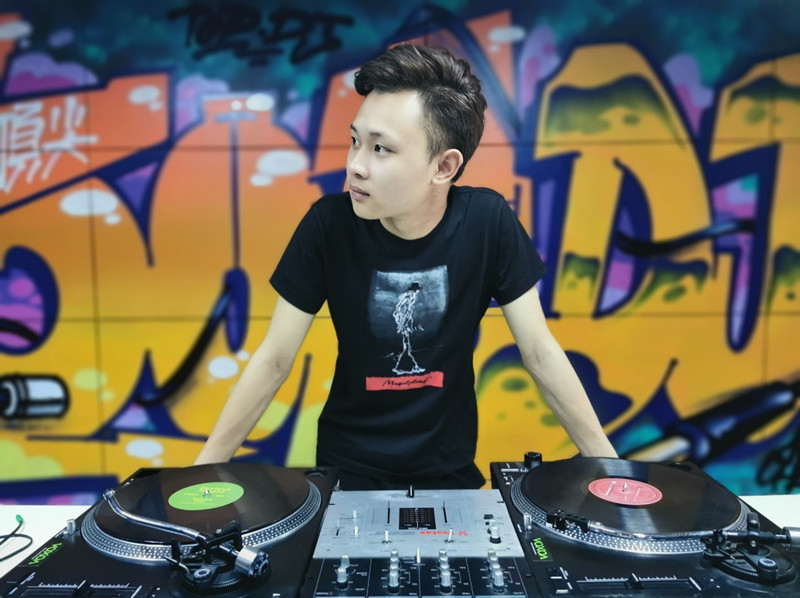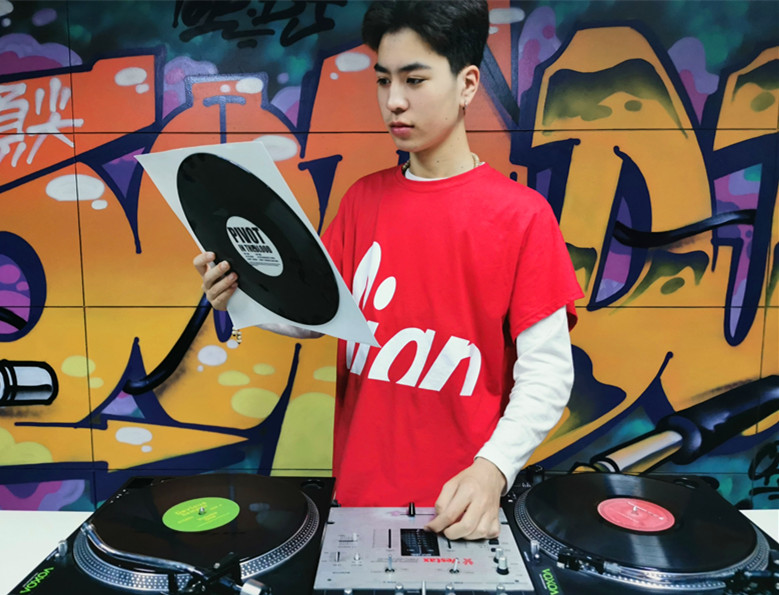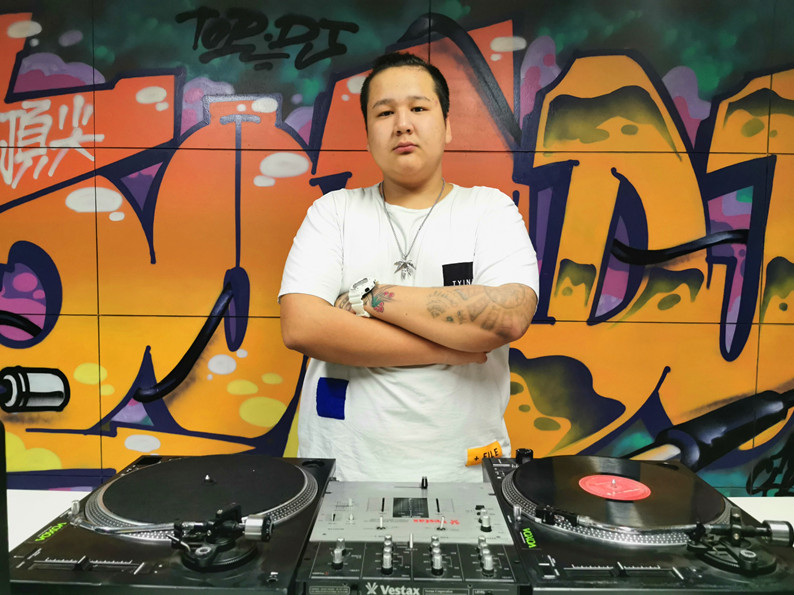顶尖DJ学校音乐风格介绍之爵士摇滚 Jazz Rock
了解更多的音乐风 格对于职业DJ来讲是很重要的,不仅要对自己领域内的音乐风格了如指掌还要适当的对其他风格的音乐有所了解,作为一名职业DJ,在学DJ初期都会接触一些 不错的类型风格音乐,其中就包含摇滚乐,很多喜欢变形精钢的朋友我想都对林肯公园不陌生,他们的摇滚乐让这部好看的电影更添了几分色彩。顶尖DJ培训中心 在教学初始就鼓励学员多接触不同的音乐风格。
本期介绍的是“爵士摇滚 Jazz Rock”,顶尖DJ学校收集整理了一些不同风格的音乐的介绍和示例,在此展示给大家互相交流,了解更多请百度“合肥顶尖DJ培训中心”!选择知名DJ学校,教学有保障,来合肥顶尖DJ学校!

爵士摇滚 Jazz Rock
爵士摇滚最早出现在60年代末期,它试图将摇滚所拥有的发自内心的力量与爵士所拥有的音乐复杂性和即兴表演融合起来。由于摇滚通常强调的是直接和简单而不 是精湛的技巧,因而大体上可以说,爵士摇滚的来源是60年代末70年代初,那些在追求艺术上最有野心的摇滚亚流派:迷幻剂、前卫摇滚、以及歌手/歌曲作者 运动。
它融合了爵士乐更老练、更理智的一面,并常在乐器的即席创作中加入人声;此种学派的代表人物包括Joni Mitchell, Van Morrison, 和 Tim Buckle. 尽管如此,大部分爵士摇滚仍是由那些精力更为旺盛的摇滚团体来演奏的。他们中的一些是以即兴演奏为方向的,被他们扩展了的带有摇滚口味的即席创作充分借助 了爵士乐中的和声及乐器,代表乐队是Traffic和Santana. 其它一些记录在案的带有爵士风味的R&B或流行乐队还有Blood, Sweat & Tears, Chicago和Steely Dan,他们运用了爵士乐中旋律性强、使用和声、富有节奏等特性,但对于即兴演奏和乐器使用上的技巧却不感兴趣。另外还有一些乐队,他们运用了爵士的复杂 性来进一步扩展摇滚的音乐界限,不仅表现在器械技巧方面,还包括创作离奇的、令人深思的、难以预料的音乐作品,比如Frank Zappa和the Soft Machine. 而其中最主要的人物就是Miles Davis,他是自早期的R&B开始觊觎摇滚朴实的力量并对年轻的听众造成一定影响之后的第一个爵士音乐家。从“1970s Bitches Brew”开始,Davis70年代早期的作品 -- 其中大部分灵感来源于Jimi Hendrix和 Sly & the Family Stone -- 迅速成为爵士摇滚唱片中最疯克、最边缘、最前卫的那部分。尽管像Zappa 和 Steely Dan这类的人物在整个70年代都一直在灌制爵士摇滚的唱片,但到80年代,这场运动从本质上说已经消散,它的听众也被爵士摇滚其它更为成熟的音乐形式所 俘获。
Jazz-rock may refer to the loudest, wildest, most electrified fusion bands from the jazz camp, but most often it describes performers coming from the rock side of the equation. Jazz-rock first emerged during the late '60s as an attempt to fuse the visceral power of rock with the musical complexity and improvisational fireworks of jazz. Since rock often emphasized directness and simplicity over virtuosity, jazz-rock generally grew out of the most artistically ambitious rock subgenres of the late '60s and early '70s: psychedelia, progressive rock, and the singer/songwriter movement. The latter drew from the mellower, more cerebral side of jazz, often employing vocal as well as instrumental improvisation; this school's major figures included Joni Mitchell, Van Morrison, and Tim Buckley. Most jazz-rock, however, was played by higher-energy rock ensembles. Some of them were more jam-oriented, borrowing jazz harmonies and instruments for their extended, rock-flavored improvisations (Traffic, Santana). Others recorded jazz-flavored R&B or pop songs that used the melodic, harmonic, and rhythmic sensibilities of jazz, but weren't as interested in improvisation or instrumental virtuosity (Blood, Sweat & Tears, Chicago, Steely Dan). Still others used jazz's complexity to expand rock's musical horizons, not just in terms of instrumental technique but in crafting quirky, challenging, unpredictable compositions (Frank Zappa, the Soft Machine). The major exception was Miles Davis, the first jazz musician since the early R&B era to covet the earthy power of rock & roll and the impact it had on young audiences. Starting with 1970's Bitches Brew, Davis' early-'70s fusion workouts -- greatly inspired by Jimi Hendrix and Sly & the Family Stone -- quickly became some of the funkiest, edgiest, most aggressive jazz-rock ever recorded. While figures like Zappa and $Steely Dan| continued to record jazz-rock through the '70s, the movement had essentially dissipated by the '80s, as a mellower form of fusion captured its audience.
它融合了爵士乐更老练、更理智的一面,并常在乐器的即席创作中加入人声;此种学派的代表人物包括Joni Mitchell, Van Morrison, 和 Tim Buckle. 尽管如此,大部分爵士摇滚仍是由那些精力更为旺盛的摇滚团体来演奏的。他们中的一些是以即兴演奏为方向的,被他们扩展了的带有摇滚口味的即席创作充分借助 了爵士乐中的和声及乐器,代表乐队是Traffic和Santana. 其它一些记录在案的带有爵士风味的R&B或流行乐队还有Blood, Sweat & Tears, Chicago和Steely Dan,他们运用了爵士乐中旋律性强、使用和声、富有节奏等特性,但对于即兴演奏和乐器使用上的技巧却不感兴趣。另外还有一些乐队,他们运用了爵士的复杂 性来进一步扩展摇滚的音乐界限,不仅表现在器械技巧方面,还包括创作离奇的、令人深思的、难以预料的音乐作品,比如Frank Zappa和the Soft Machine. 而其中最主要的人物就是Miles Davis,他是自早期的R&B开始觊觎摇滚朴实的力量并对年轻的听众造成一定影响之后的第一个爵士音乐家。从“1970s Bitches Brew”开始,Davis70年代早期的作品 -- 其中大部分灵感来源于Jimi Hendrix和 Sly & the Family Stone -- 迅速成为爵士摇滚唱片中最疯克、最边缘、最前卫的那部分。尽管像Zappa 和 Steely Dan这类的人物在整个70年代都一直在灌制爵士摇滚的唱片,但到80年代,这场运动从本质上说已经消散,它的听众也被爵士摇滚其它更为成熟的音乐形式所 俘获。
Jazz-rock may refer to the loudest, wildest, most electrified fusion bands from the jazz camp, but most often it describes performers coming from the rock side of the equation. Jazz-rock first emerged during the late '60s as an attempt to fuse the visceral power of rock with the musical complexity and improvisational fireworks of jazz. Since rock often emphasized directness and simplicity over virtuosity, jazz-rock generally grew out of the most artistically ambitious rock subgenres of the late '60s and early '70s: psychedelia, progressive rock, and the singer/songwriter movement. The latter drew from the mellower, more cerebral side of jazz, often employing vocal as well as instrumental improvisation; this school's major figures included Joni Mitchell, Van Morrison, and Tim Buckley. Most jazz-rock, however, was played by higher-energy rock ensembles. Some of them were more jam-oriented, borrowing jazz harmonies and instruments for their extended, rock-flavored improvisations (Traffic, Santana). Others recorded jazz-flavored R&B or pop songs that used the melodic, harmonic, and rhythmic sensibilities of jazz, but weren't as interested in improvisation or instrumental virtuosity (Blood, Sweat & Tears, Chicago, Steely Dan). Still others used jazz's complexity to expand rock's musical horizons, not just in terms of instrumental technique but in crafting quirky, challenging, unpredictable compositions (Frank Zappa, the Soft Machine). The major exception was Miles Davis, the first jazz musician since the early R&B era to covet the earthy power of rock & roll and the impact it had on young audiences. Starting with 1970's Bitches Brew, Davis' early-'70s fusion workouts -- greatly inspired by Jimi Hendrix and Sly & the Family Stone -- quickly became some of the funkiest, edgiest, most aggressive jazz-rock ever recorded. While figures like Zappa and $Steely Dan| continued to record jazz-rock through the '70s, the movement had essentially dissipated by the '80s, as a mellower form of fusion captured its audience.
FAQ常见问题
-
价格:¥5800
-
价格:¥9800
-
价格:¥12800
-
价格:¥16800
-
价格:¥32800





































